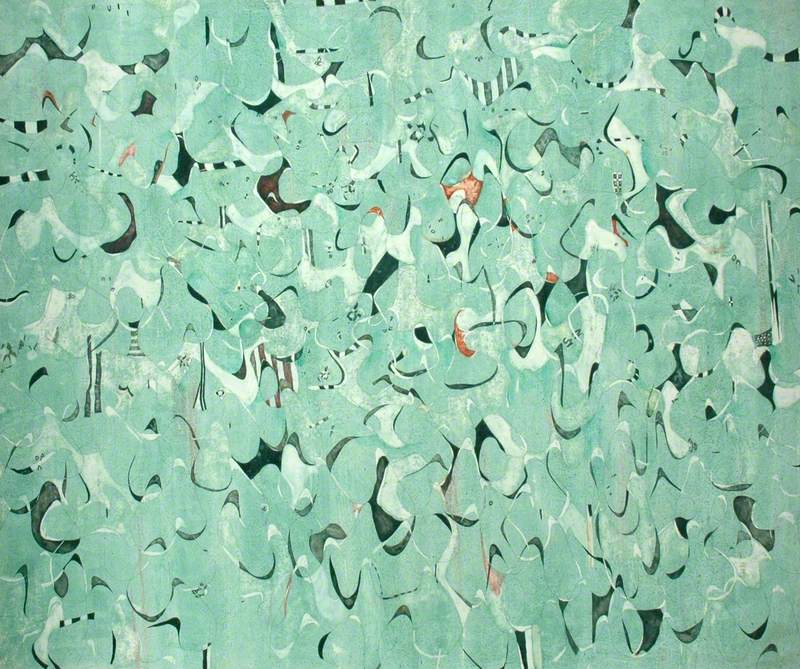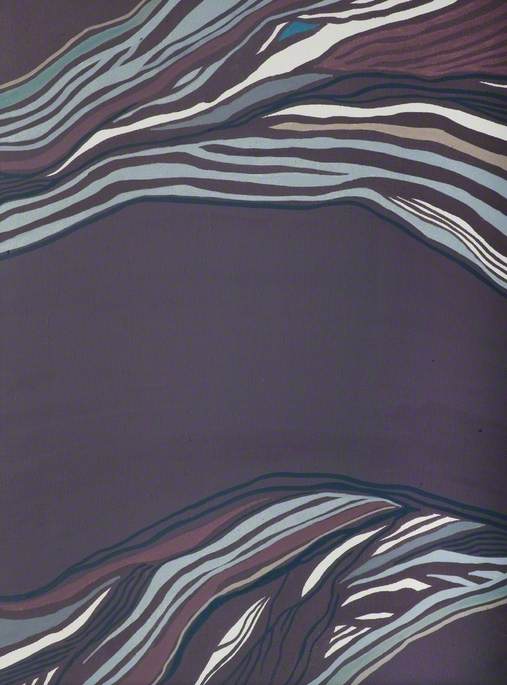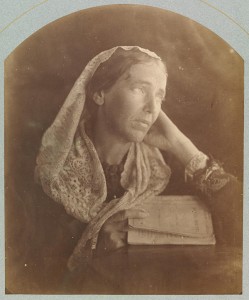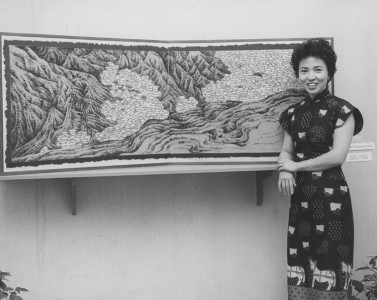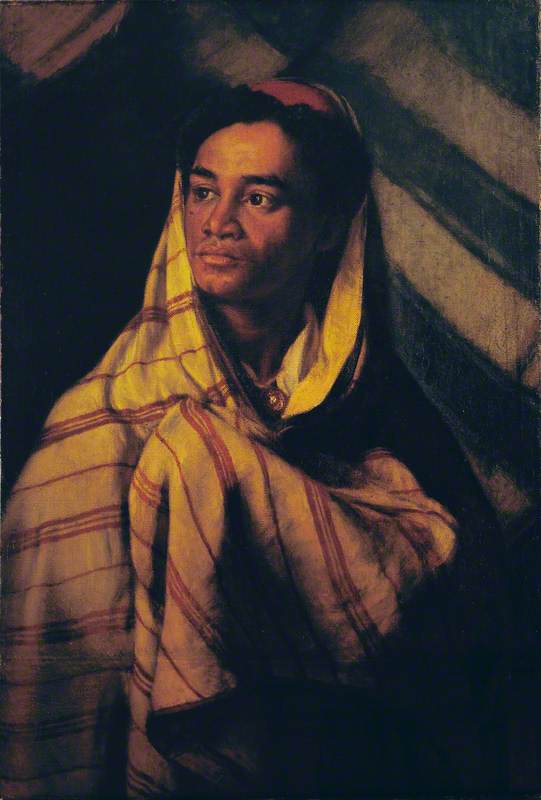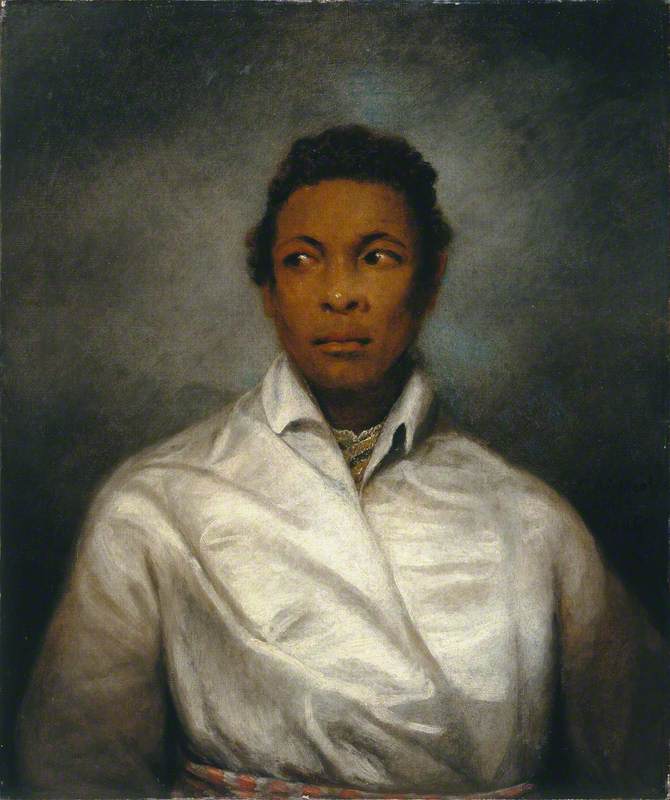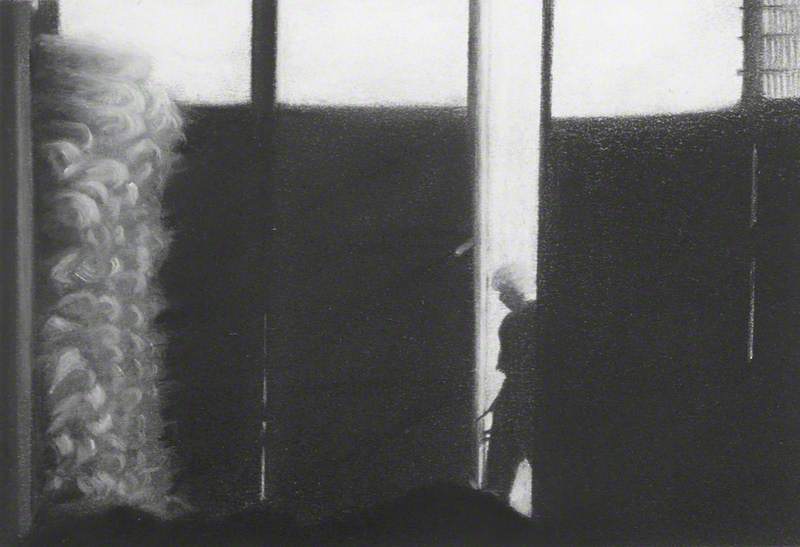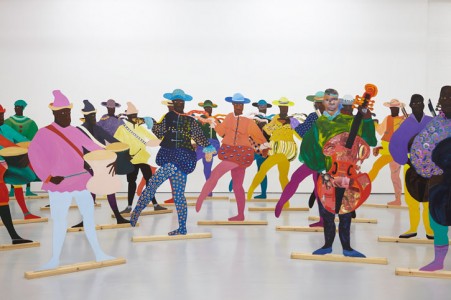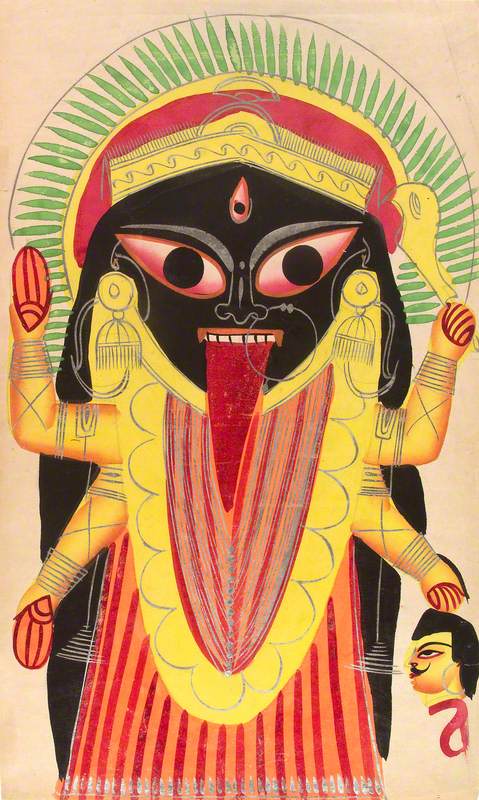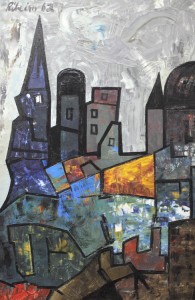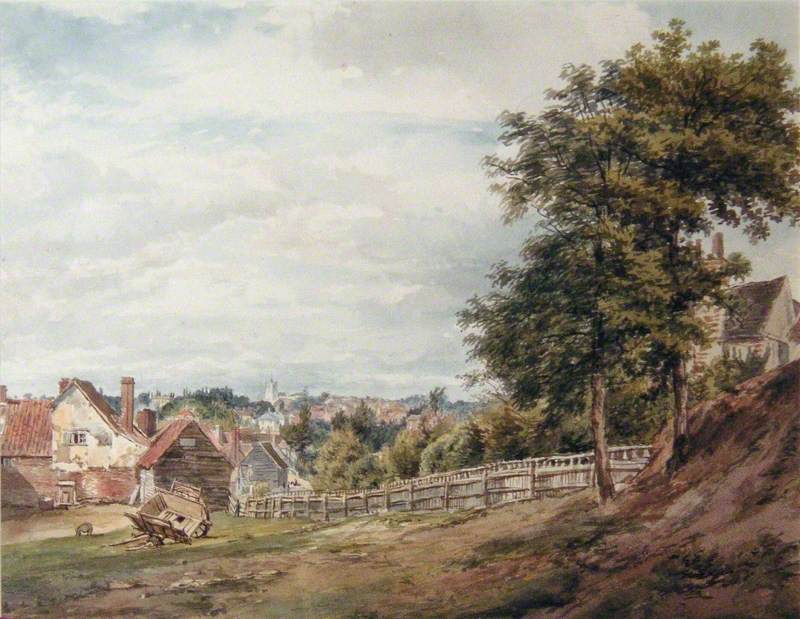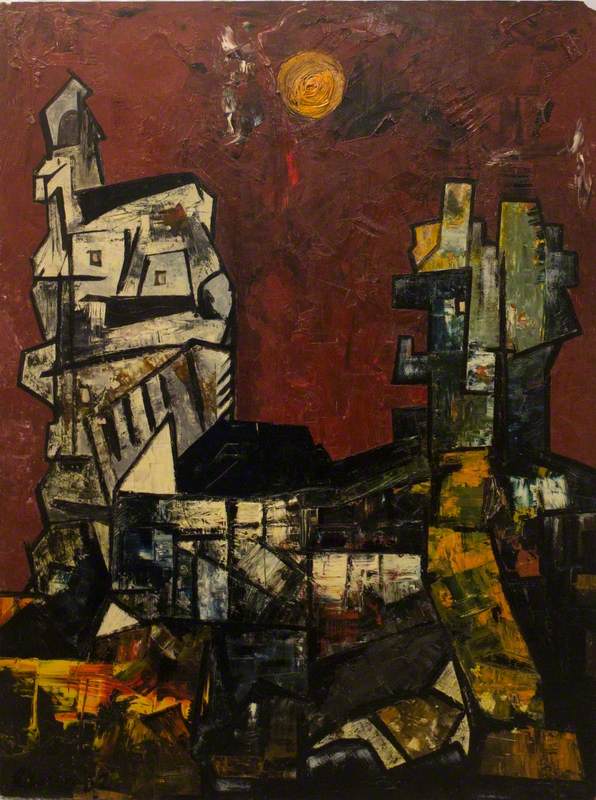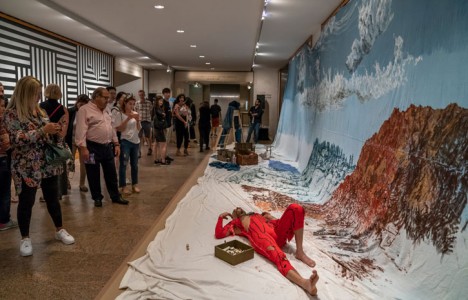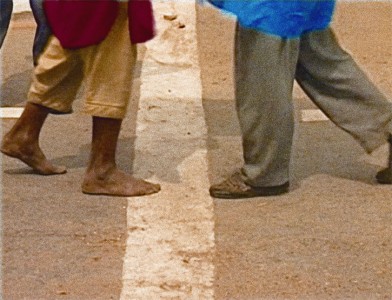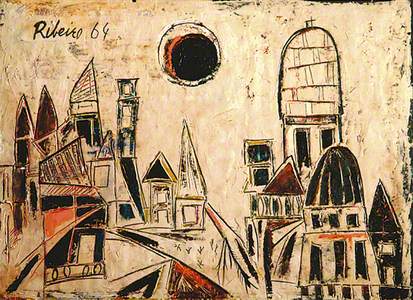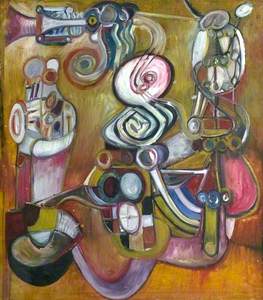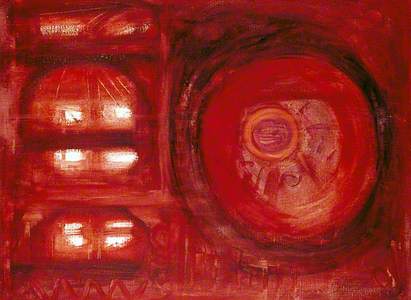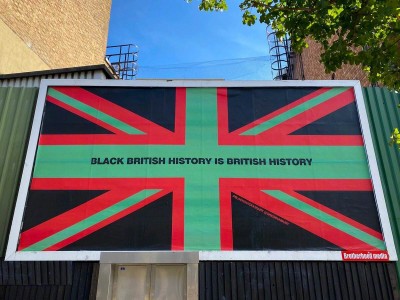A new exhibition tracing the history of the Indian Painters Collective, UK (IPC) opens in London this week. It charts the origins of a 25-year movement that advocated for their active involvement rather than simple representation in the British art scene.
Four young Indian painters, meeting at a North London address, established the informal grouping of the IPC in 1963. Gajanan Baghwat, Yashwant Mali, Lancelot Ribeiro and Ibrahim Wagh (former members of the Bombay Art Society), were soon joined by Balraj Khanna and S. V. Rama Rao. They would create the first artistic body of its kind outside of India and achieve the first group showing of Indian artists in the country.
The group's 1964 circular announced its mission was to 'represent a wide field of young Indian painters… that would give a positive idea of contemporary painting in India today.' For a £1 annual subscription fee plus an 'optional' 10 per cent from sales, they sought to stage frequent solo or group exhibitions 'under their own auspices whether in the UK or on the Continent'.
Other young painters would be enticed in to make the IPC 'progressive in its work'. From the youngest, Balraj Khanna (aged 23), to the eldest, Lancelot Ribeiro (aged 30), this fervent group of six came from across the subcontinent and represented a broad expanse of Indian painting. All had studied in prestigious art schools and won acclaim back in India, moving to Britain in the 1950s and 1960s with ambitions to propel their artistic aspirations further.
Source
1978, acrylic on canvas by Ibrahim Wagh 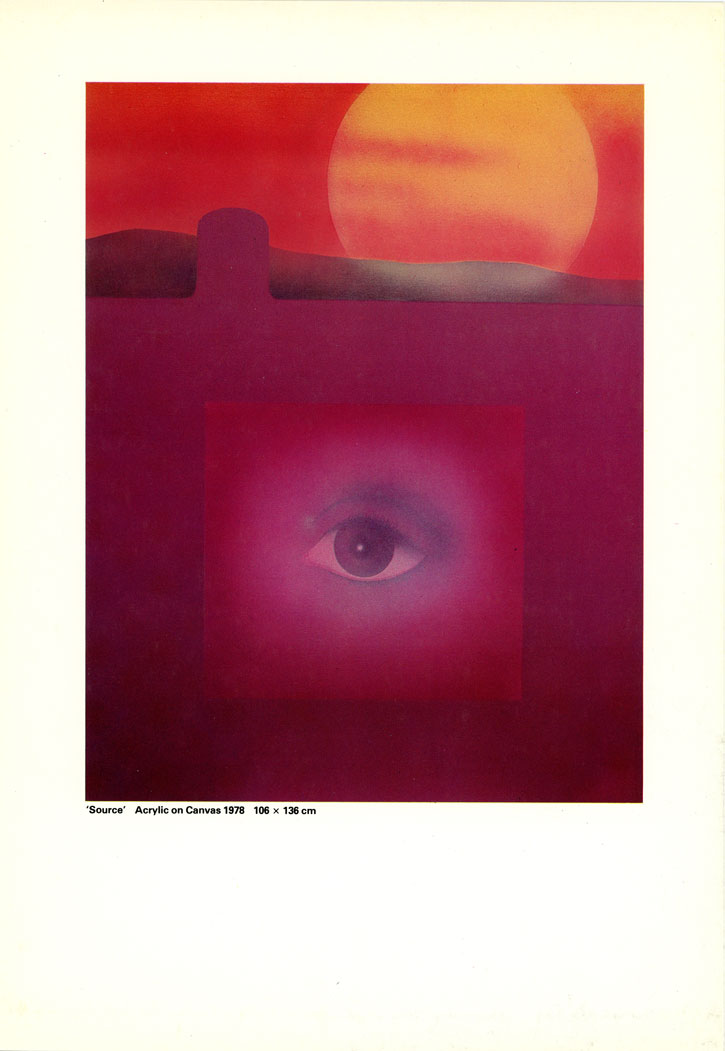
As former member Yashwant Mali explained: '[We] realised that we had to fight to promote ourselves and that's why we founded the group, as some kind of force.'
The IPC's first coup was the 'Six Indian Painters' exhibition in 1964 at India House in Aldwych. Ambassador Salman Haidar (former Indian Foreign Secretary), then a junior official in the culture section of the Indian High Commission, recalled: '... a group of young men burst in, with Lance in the lead, and told me I had to organize an exhibition of their work at India House. They were artists from India, and were looking to make their mark in the great abroad, which in those days meant London… seeking opportunities, not concessions. They exemplified the freshly awakened pride of the new nation and India House was rapidly infused by their enthusiasm.'
These artists took control of every aspect of their event, 'scrounging' whatever they could find from the 'inner depths' of India House to host 'a fine exhibition of modern Indian art where nobody had ever thought of having one'.
Untitled (Seated Woman)
1975 by Yashwant Mali 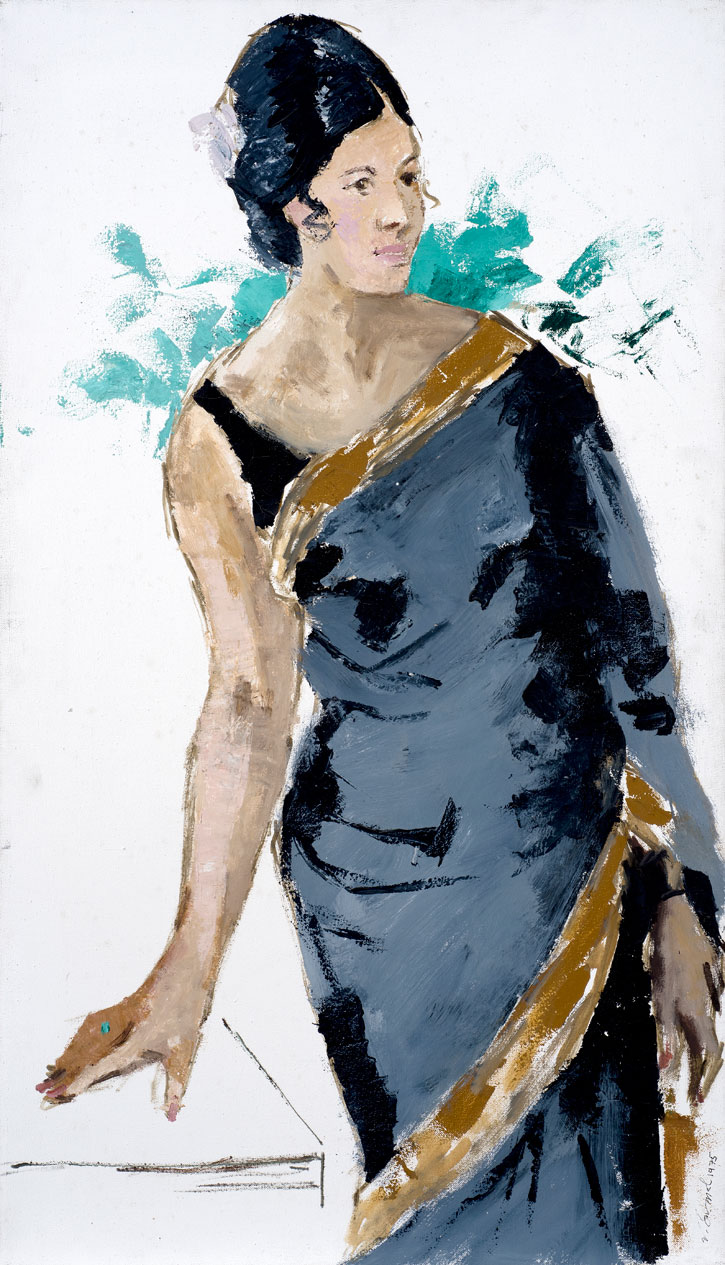
The Indian High Commissioner, Dr Jivraj N. Mehta and Jennie Lee (seen in this portrait by Montague Leder), then Parliamentary Secretary Ministry of Public Buildings and Works, opened the show. Lee was Britain's first Arts Minister in Harold Wilson's newly elected Labour government. She would oversee double-spending in the arts and set up The Open University, which Wilson considered the greatest achievement of his premiership. In the opening proceedings, Lee declared: 'I hope before long the cultural attachés at all diplomatic missions would play an increasingly important part and I do not mind if defence attachés lost importance.'
Untitled (Landscape)
1964 by Lancelot Ribeiro (1933–2010) 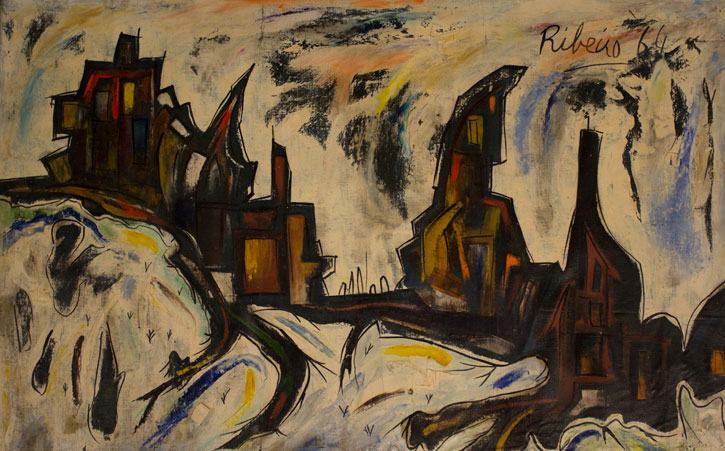
Following their 1964 success, the IPC sought inclusion in The 1965 Commonwealth Arts Festival which would feature artists from across the former British Empire. A 'Contemporary Art from India' exhibition was to be curated by George Butcher, the Guardian's art critic, who had gotten to know some of the artists personally. Although their approach was welcomed, it came too late and the window for what would have been invaluable exposure was missed. 'Liaising' with the Festival was suggested by the sympathetic organisers as recompense, if the artists could muster together an exhibition in a London gallery under their own resources within the next few days.
Untitled (Four Seated Figures)
1961 by Ibrahim Wagh 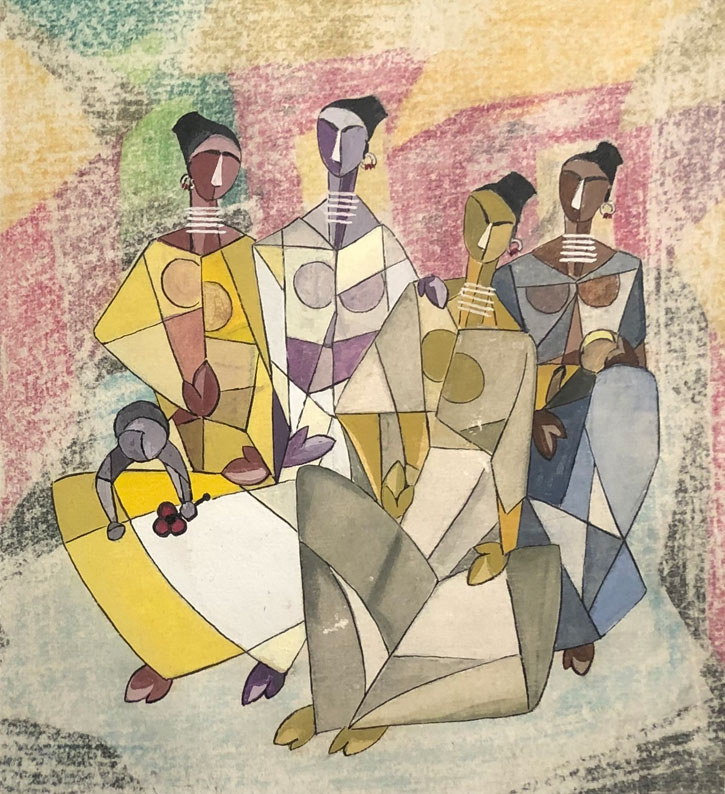
By the 1970s, the group had dwindled down to just four artists (Khanna, Mali, Ribeiro and Wagh), and was now titled the Indian Artists UK (IAUK). It was a revitalised form of the IPC and still 'the only organisation of its kind outside India.' The IAUK was 'non-profitmaking and apolitical [and] democratic.' It promised to seek greater access into public collections and to grant funding for its members. Full members were to be vetted professional artists of Indian origin, subscribing for £20 annually with one successful solo exhibition in tow. Associate members (students and 'others') and patrons were also invited to join. Throughout 1977, the group forged relationships with The Commission for Racial Equality (CRE), The Arts Council and The Minorities' Arts Advisory Service (MAAS) which would prove fruitful in coming years (MAAS would arrange the 1979 multicultural 'Rainbow Art Group' exhibition in Birmingham involving IAUK members).
Untitled (Abstract Forms)
1961 by Ibrahim Wagh 
The slimmed-down collective would soon secure another exhibition at India House with 'Four Leading Indian Artists' in 1978. The show was celebrated in the form of a lavish cocktail party at the residence of the Indian High Commissioner, with the express purpose of elevating IAUK's presence. Balraj Khanna recalled: 'It was a very grand house in Kensington Palace Gardens. And we all had one painting each. The whole lot of London came... For us it was a great party. Some galleries were invited and at least three of them turned up.'
By 1978, IAUK had also expanded to nine members, with Avinash Chandra, Prafull Davé, Prafulla Mohanti, Suresh Vedak and Mohammed Zakir joining. It now had a glossy corporate pack, helped by funding from the Indian High Commission and the CRE. Colour-plated artist biographies and an introductory statement revealed that the underlying sentiments, which had triggered the IPC into being, were largely unchanged. However, a new note of militancy had crept into the language. Each member had according to Khanna 'his own tale to tell, having come up against closed shop tactics, and a hard wall of chauvinistic zeal'.
By the end of the decade, Khanna, Chandra and Davé would leave and there were signs of differences emerging within the ranks. In a 1973 interview, Ribeiro had explained the start of internal rumblings: 'Partly it broke up because some of the artists went back to teaching or commercial jobs. Partly it was all kinds of petty niggling things which developed as they always seem to develop with Indian groups.' Khanna concurred: 'When you get Indian groups together, it's like Partition all over again.'
Terraneum I
1979, acrylic on canvas by Lancelot Ribeiro (1933–2010) 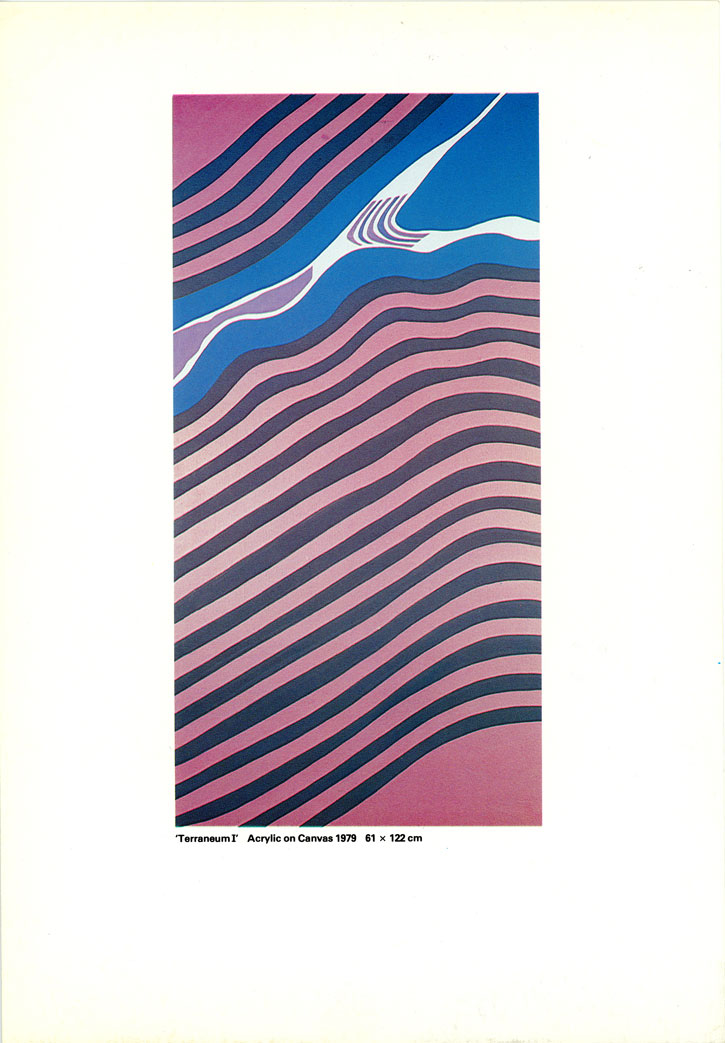
In 1980, the first exhibition to be mounted by the collective – now known as IAUK was at the Burgh House & Hampstead Museum. India Weekly enthused that the 'stunningly beautiful paintings... the contrast and variety of styles represented... is as pleasant as it is amazing.' The IAUK Group had now acquired a new patron too, Mr Swarj Paul (the Labour peer and steel magnate, Baron Paul) and support from the Indian High Commission and CRE. 'Indian Month' comprised a celebration of art, poetry, music and a 'Taste and Learn' Indian food afternoon and notable experts in the form of Robert Skelton from the Victoria and Albert Museum and Philip Rawson from the Royal College of Art.
IAUK at Burgh House
1980, 'India Weekly' 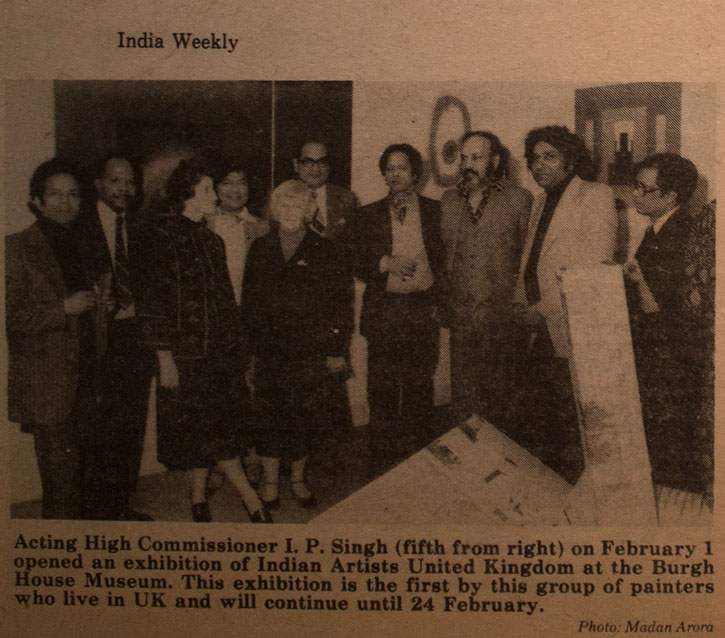
A further coup was achieved in 1982 with the 'Between Two Cultures' exhibition at Barbican, as part of The Festival of India. It would now feature in a much enlarged IAUK membership base, with 17 artists – old, new (i.e. younger) and returning collective members.
The Indian artists' collective movement proved to be prescient in its vision in terms of engagement, inclusion and outreach, elements which are now taken as expected in public arts delivery. It should be remembered that behind this collective body of talent were artists who were also advancing their own work while meeting the gruelling demands of their personal exhibition circuit. Their tireless campaign to push the work of South Asian artists to the fore, since the fledgling Indian Painters Collective was created, deserves much credit over half a century later.
The exhibition 'The Roots of the Indian Artists' Collective' will display works from former members Mali, Mohanti, Ribeiro, and Wagh, alongside archival material. The exhibition runs from 11th July to 9th August 2019 at the Grosvenor Gallery, 35 Bury Street, London SW1Y 6AY. Find out more at www.grosvenorgallery.com
Marsha Ribeiro, daughter of Lancelot Ribeiro

